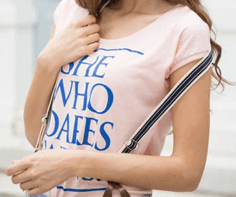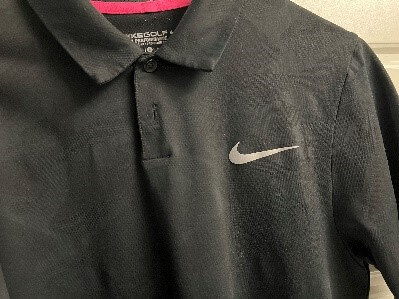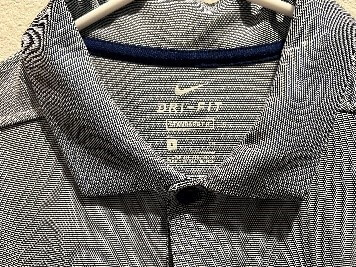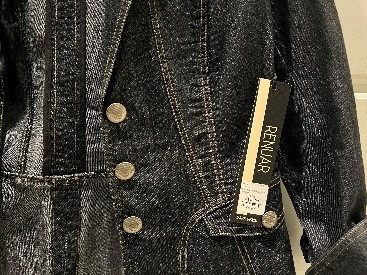
(Ted D. Karr
Partner, Berkeley Law and Technology Group, LLP
February 9, 2022)
One of the most popular products that people seek to brand with a trademark is clothing. Hundreds of thousands of clothing brands are on the market today and sales are only growing. Global retail sales of apparel reached 1.5 trillion dollars in 2020 and that number is projected to grow to 2.25 trillion dollars by 2025.
Most fledgling clothing retailers begin with selling branded t-shirts, sweatshirts, hats and caps. These are the go-to items. More specialized businesses present swimwear, yoga clothing, or athletic gear. Very popularly, the point of sale is conveniently online (i.e. Amazon.com, shopify.com, Etsy.com, and individually launched sites to name some), but also people launching a new clothing brand, or line will often sell their clothes in retail establishments. Larger retailers may carry many brands, or mark holders may choose to sell in boutiques that carry a more select few brands.
The barrier to entry into the clothing business is virtually an open door as it is relatively simple to procure unbranded clothing, and cheaply from China. Also, the cost to have a logo added or affixed to an article of clothing is generally low. By the same token, it is relatively simple for someone to start trading on another party’s registered logo or brand.
Copycats and infringers are common in the clothing industry. It is important to do what you can to protect your clothing brand. Doing so will add value to your business and product and increase your goodwill. Deterring infringers through a federally registered trademark will prevent your logo from being diluted, misappropriated, and preserve its status as an original, recognizable mark. Your brand differentiates your goods, and if it is a successful logo, lends brand recognition to a saturated, ever-consuming market.
In order to protect your brand it is a good idea to register your trademark for clothing with the United States Patent & Trademark Office (USPTO). Doing so puts others on notice of your trademark rights. It also provides you with a presumption of exclusive rights to use your brand in the United States. Each trademark registered at the USPTO contains an association with a particular class or set of classes. Clothing for instance is primarily included in Class 25. You also have two primary filing options when it comes to filing for registration of your trademark[1]. One is to file based on “intent-to-use.” That means you have a bonified intent to use the trademark in commerce in association with the clothing items listed in your trademark application and that you are taking steps to develop, manufacture or market your products. This filing basis allows you to reserve a priority date for your trademark even if you have not started selling any clothing products branded with the mark. The other filing basis is “actual use.” As the name suggests, if you are already selling your clothing with the brand affixed to it, then it is likely best to use this filing basis.
Whether you file based on “intent-to-use” or “actual use,” before your United States trademark will register at the USPTO you must file what is called a specimen of use of your trademark in commerce. A specimen of use is evidence that you are using your trademark in interstate commerce. If your trademark application for clothing is based on “actual use” at the time of filing your application, you will file the specimen of use at the time of filing. If your trademark application for clothing is based on an “intent-to-use” at the time of filing, you will be required to file a Statement of Use showing use of the mark in commerce in association with at least one of the articles of clothing in your Class 25 list of goods in order to advance your trademark application to registration.
One thing to keep in mind with trademarks on clothing is the need for the logo (brand) to be presented as a brand rather than a slogan or an “ornamental design.” It’s important to avoid your trademark application’s receiving an “ornamental refusal,” which is a common pitfall when submitting a specimen for apparel or clothing. For example large screen-printed or embroidered text or designs on the front or back of garments rarely meet this exacting standard. The USPTO may therefore refuse a specimen for being “merely ornamental” or a “decorative feature.”
[1] You have two filing options, assuming that you are not filing in the US based on a foreign trademark application or registration.

Photo by Engin Akyurt from Pexels
Here are some tips to ensure your United States trademark specimen of use for clothing will be accepted by the US Patent & Trademark Office:



Tip: Anything detachable from the garment, like plastic wrapping, boxes, or tags usually qualify.

Tip: Though not ideal, sometimes featuring the mark along with the goods in an online store can function as a source indicator. This approach works if the online store includes a means for ordering the products.
Tip: Finally, when filing a specimen of use, know that digital “moch ups” of trademarks on items of clothing are not acceptable specimens of use. The USPTO utilizes software to detect whether a specimen of use is a digital “moch up.” Therefore, if you have not yet started producing your branded clothing you should avoid using a digital “moch up” for your specimen of use and instead consider the “intent-to-use” filing basis.
Let Us Help
If you are interested in moving forward with registration of your trademark for a clothing brand contact a skilled trademark attorney. We would be happy to have one of our experienced trademark attorneys assist you with the process. You can reach us at austin@bltg-ip.com or 512-920-1899.
We look forward to working with you.
